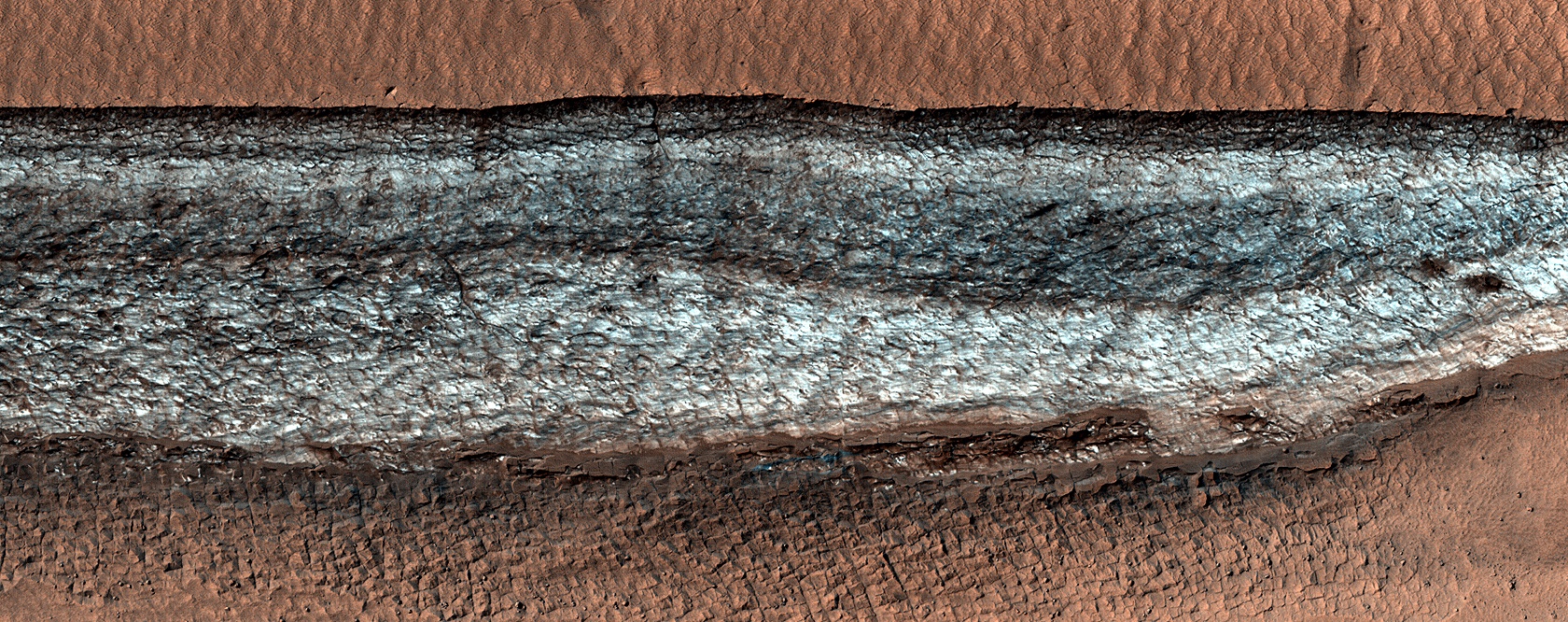Legendary astronomer Frank Drake has passed away at the age of 92. Known primarily for his Drake Equation — an estimate of the probability of intelligent extraterrestrial life — he pioneered the field of SETI, the Search for Extraterrestrial Intelligence, and was a noted astronomer and astrophysicist. His work and life have left an indelible mark on humanity and given hope and wonder to all our hearts.
Continue reading “Legendary Astronomer Frank Drake has Passed Away”JWST Takes Its First Image of an Exoplanet
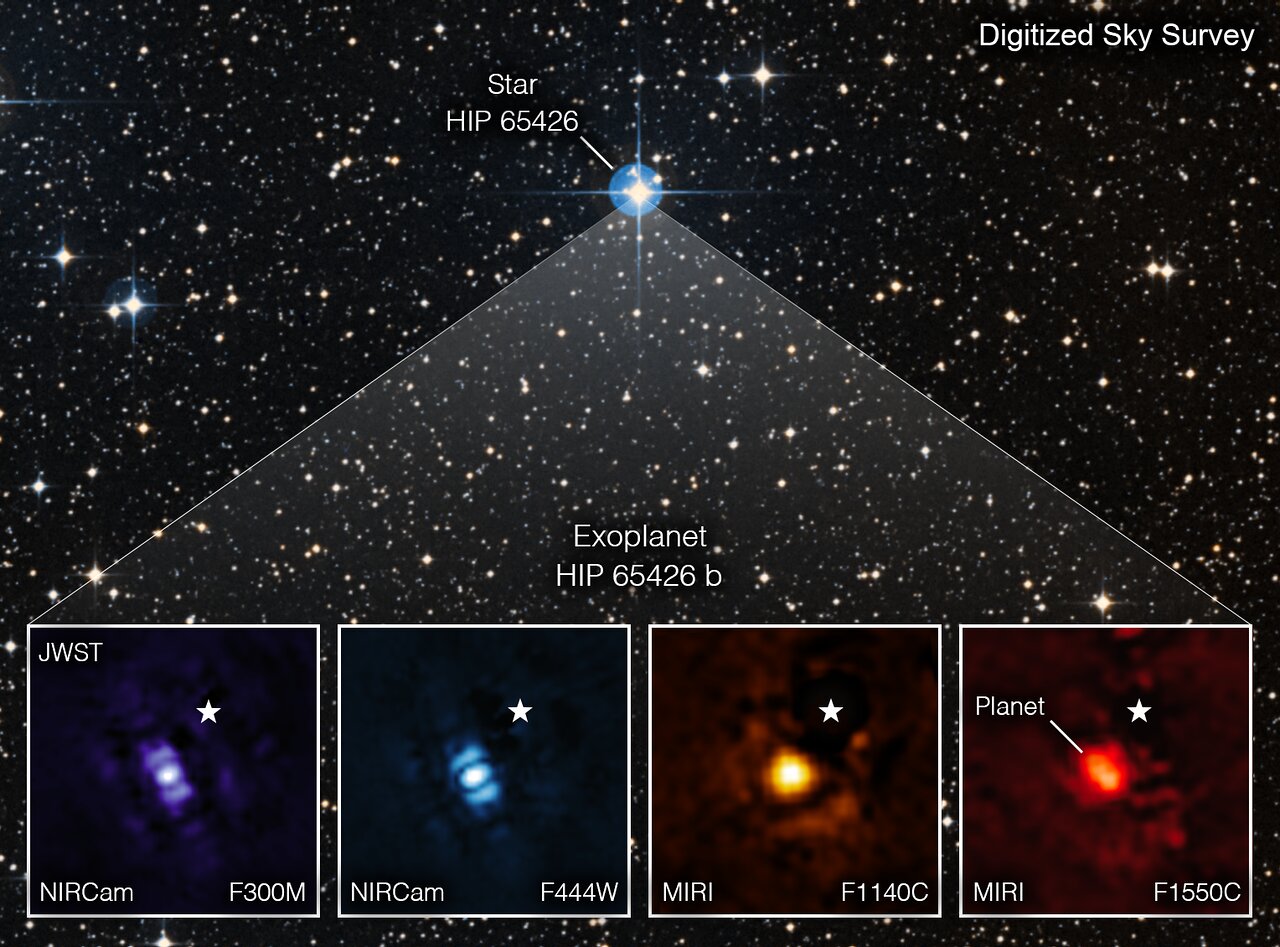
The James Webb Space Telescope has taken its first direct image of an exoplanet, a planet outside our Solar System. The exoplanet, HIP 65425 b is a gas giant that orbits an A-type star, has a mass of about nine times that of Jupiter and is about 355 light-years from Earth. While the planet has virtually no chance of being habitable, the data from these observations show just how powerful a tool JWST will be for studying exoplanets.
Continue reading “JWST Takes Its First Image of an Exoplanet”A Planet has Been Found That Shifts In and Out of the Habitable Zone
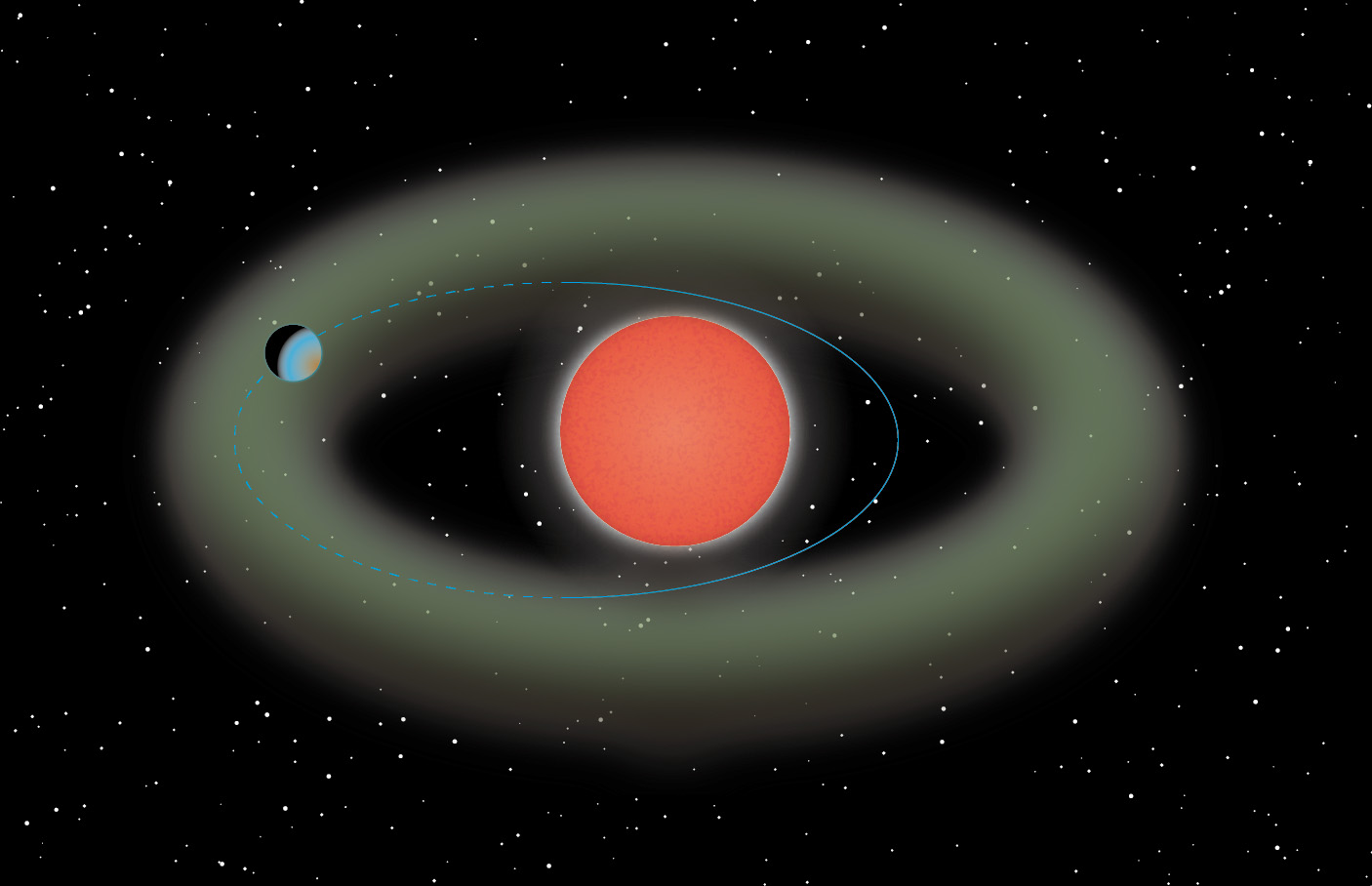
A super-Earth planet has been found orbiting a red dwarf star, only 37 light-years from the Earth. Named Ross 508 b, the newly found world has an unusual elliptical orbit that causes it to shift in and out of the habitable zone. Therefore, part of the time conditions would be conducive for liquid water to exist on the planet’s surface, but other times it wouldn’t.
Continue reading “A Planet has Been Found That Shifts In and Out of the Habitable Zone”NASA Will Try Again on September 3 For First Launch of Artemis
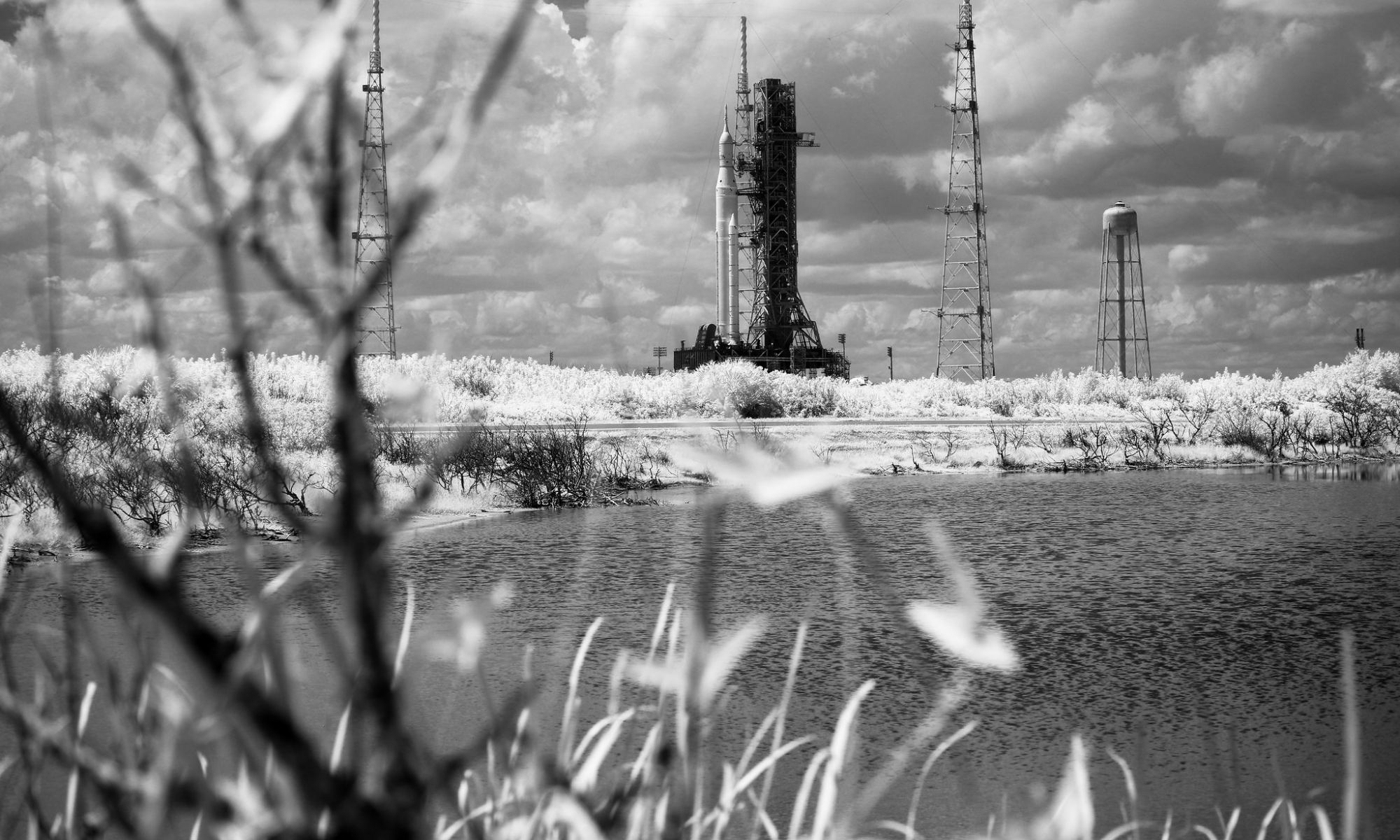
After reviewing the data from Monday’s scrubbed launch attempt for the Space Launch System/Artemis- 1 test flight, NASA’s Mission Management Team feels the rocket and the launch team will be ready for another try at the program’s maiden launch on Saturday, September 3. The two-hour launch window starts at 2:17 pm EDT (18:17 UTC).
Continue reading “NASA Will Try Again on September 3 For First Launch of Artemis”This is What a Robotic Explorer Might See When it Reaches Europa’s Oceans
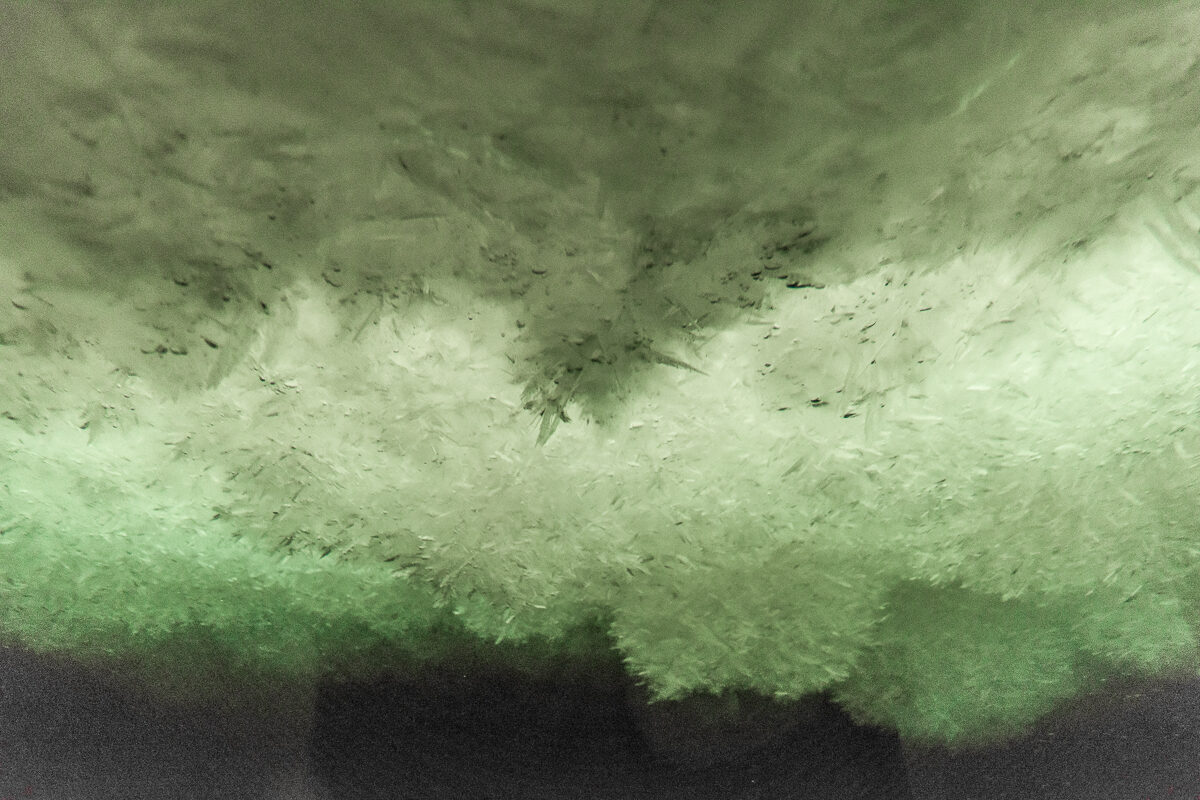
For decades, evidence has been mounting that beneath the icy crust of Jupiter’s moon Europa, a vast ocean exists that could possibly host microbial life. As scientists prepare to send the Europa Clipper mission to orbit the Jupiter system, they are trying to learn more about the subsurface ocean and the ice that encompasses the moon.
One way to study Europa is to look at similar environments here on Earth. Scientists say that conditions found under Earth’s Antarctic ice shelf provides an analog to Europa’s subsurface ocean and can help them determine how the moon’s ice shell accretes and grows.
A new study published in the journal Astrobiology looked at a unique phenomenon in the Antarctic ocean called underwater snow. This is where ice floats upwards onto the bottom of the ice shelf and attaches in fluffy-looking mounds. This helps to replenish the ice shelf. The study infers that the same phenomenon is likely true for Jupiter’s moon, and may play a role in building and replenishing its exterior ice shell.
Continue reading “This is What a Robotic Explorer Might See When it Reaches Europa’s Oceans”This Ice Cliff is One of the Few Places With Exposed Water ice in the Mid-Latitudes on Mars. It’s Probably Tens of Millions of Years old
Because of the orbiters and landers that have studied Mars over the years, scientists have learned that water ice is very likely locked away just under the surface throughout the planet’s mid-latitudes. These regions – especially in the northern hemisphere — are mostly covered with smooth material and scientists suspect ice is just underneath.
But sometimes, images like this give one from the HiRISE (High Resolution Imaging Science Experiment) camera on the Mars Reconnaissance Orbiter, provides a glimpse of the ice that might be buried below the surface. This image shows a cliff jutting out of the normally smooth terrain, and the cliff is covered with bright ice.
Continue reading “This Ice Cliff is One of the Few Places With Exposed Water ice in the Mid-Latitudes on Mars. It’s Probably Tens of Millions of Years old”JWST Finds a Clear, Unambiguous Signal for Carbon Dioxide in an Exoplanet’s Atmosphere
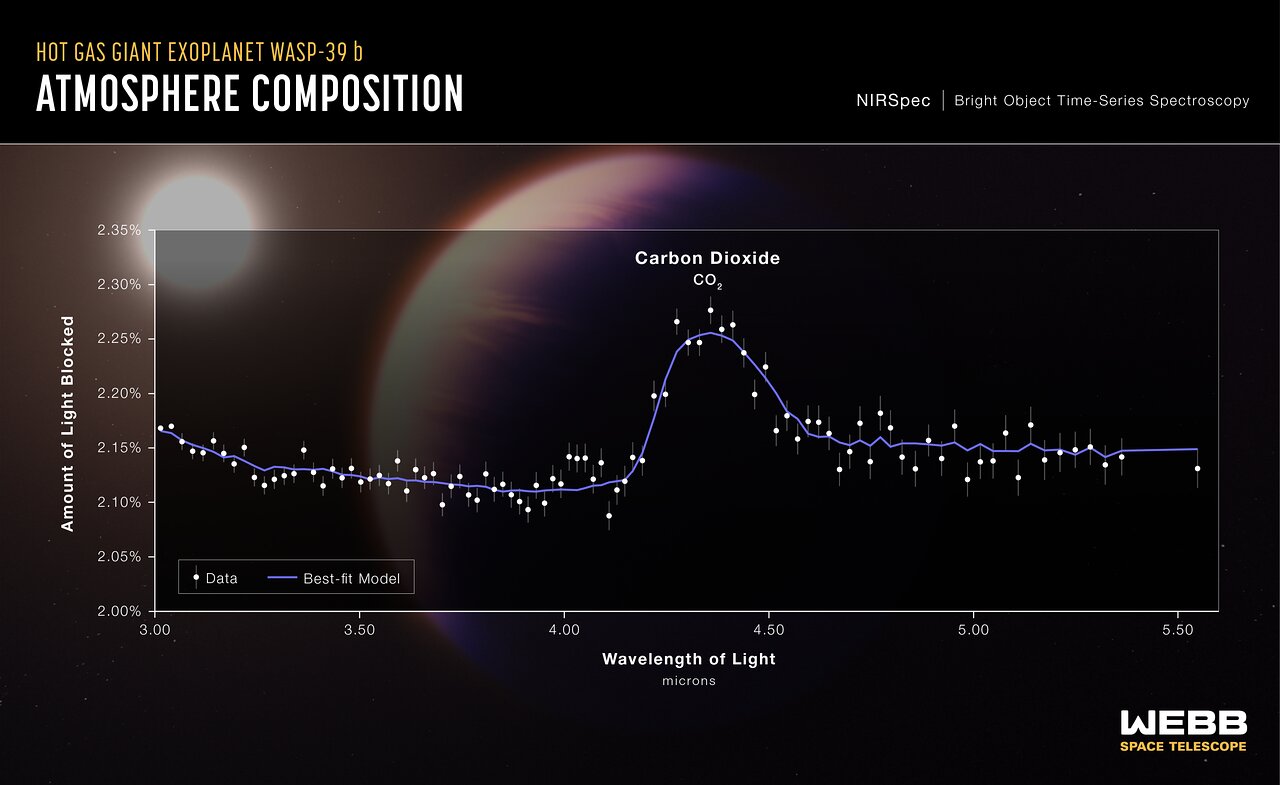
An early – and exciting — science result from the James Webb Space Telescope (JWST) was announced today: the first unambiguous detection of carbon dioxide in the atmosphere of an exoplanet. This is the first detailed evidence for carbon dioxide ever detected in a planet outside our Solar System.
Continue reading “JWST Finds a Clear, Unambiguous Signal for Carbon Dioxide in an Exoplanet’s Atmosphere”Rare “Red Sprites” Seen From ESO’s La Silla Observatory in Chile
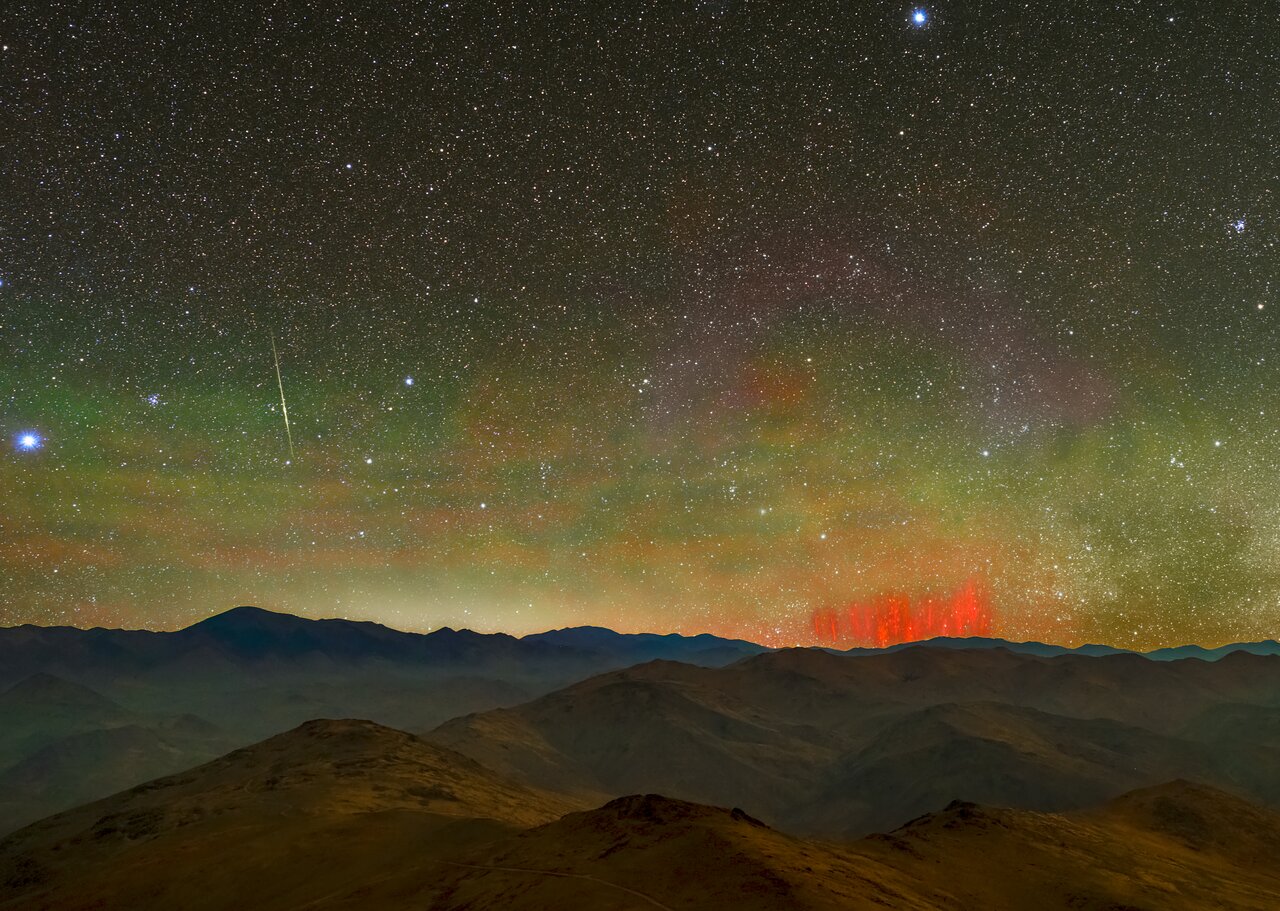
This new image taken of the skies above Chile’s Atacama Desert near the European Southern Observatory’s (ESO) La Silla Observatory, shows bright red streaks in the sky known as red sprites. Red sprites are large-scale electrical discharges that occur high above thunderstorm clouds, usually triggered by the discharges of positive lightning between an underlying thundercloud and the ground. However, the red sprites appear high in Earth’s atmosphere, sometimes 50-90 km in altitude.
Continue reading “Rare “Red Sprites” Seen From ESO’s La Silla Observatory in Chile”Spacewalk Cut Short, Cosmonaut Told to “Drop Everything” and Go Back Into the Space Station
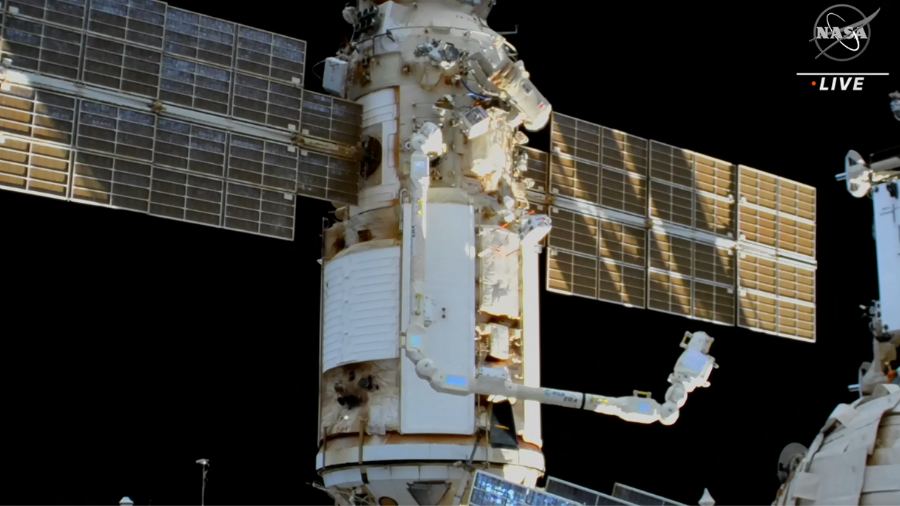
Russian and US flight controllers decided to cut short a spacewalk by two cosmonauts outside the International Space Station yesterday after voltage fluctuations in Oleg Artemyev’s Orlan spacesuit caused concern. About halfway into a scheduled seven-hour EVA, Artemeyev was repeatedly ordered to drop what he was working on and return to ISS’s airlock.
“Drop everything and start going back right away,” was one of the translated messages heard during a NASA livestream of the spacewalk. “Oleg, you must return to the airlock as soon as possible because if you lose power, it is not only the pumps and the fan, you will lose comm. You have to go back.”
Continue reading “Spacewalk Cut Short, Cosmonaut Told to “Drop Everything” and Go Back Into the Space Station”Artemis 1 Goes Back to the Launch pad, Getting Ready for its August 29th Blastoff

The Space Launch System (SLS) rocket and Orion spacecraft now sits on the launchpad, ready for liftoff on a journey around the Moon. This is the first time since 1972 that NASA has a human-rated spacecraft is ready to go beyond Earth orbit.
Continue reading “Artemis 1 Goes Back to the Launch pad, Getting Ready for its August 29th Blastoff”

